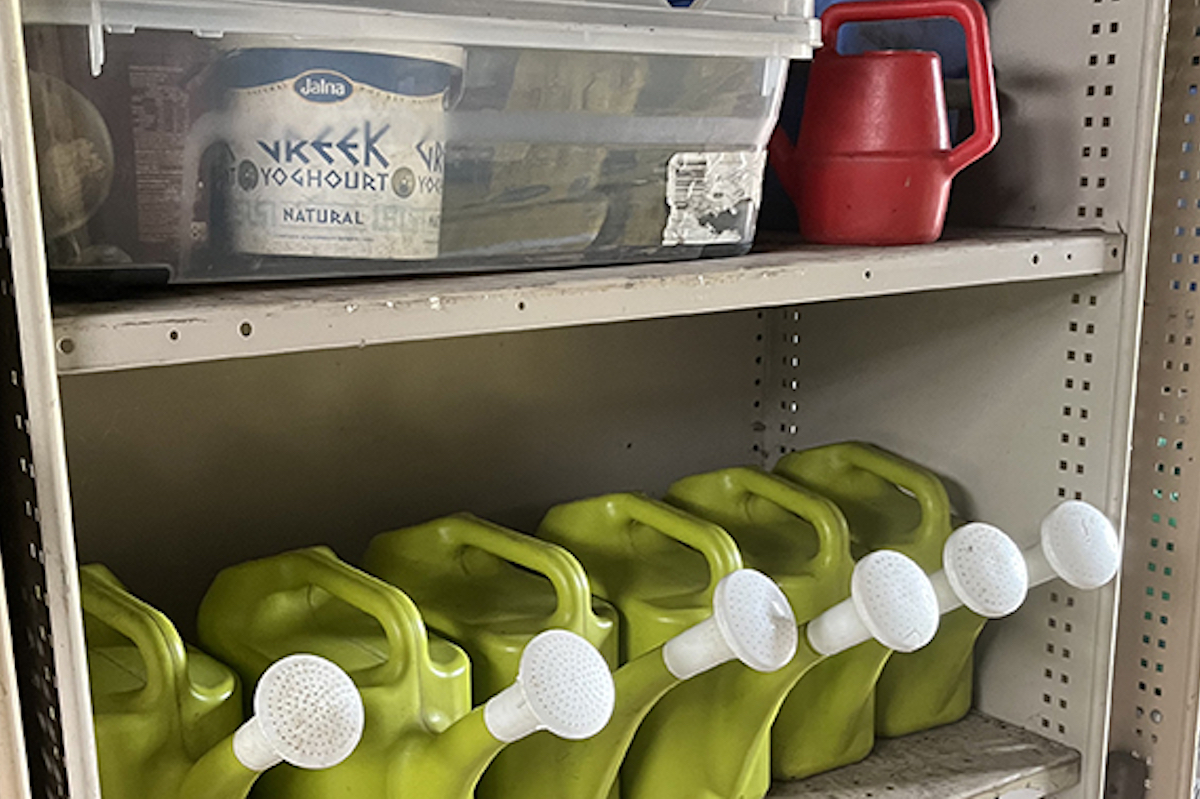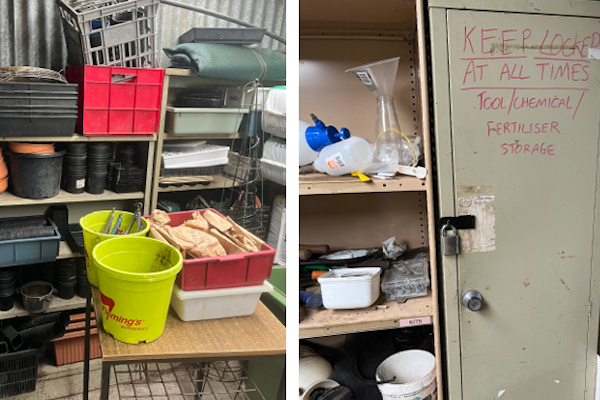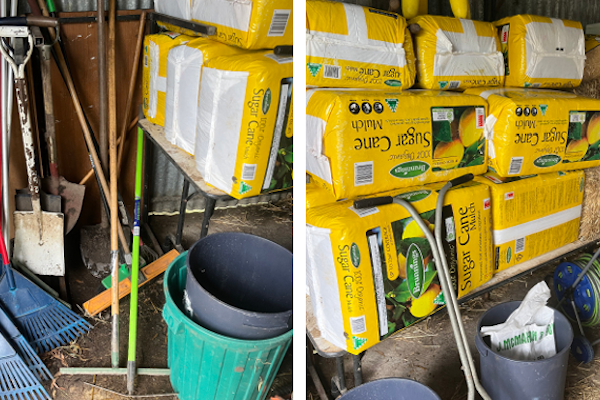Day of the Shed

They’re a tricky thing to keep organised, as size, storage opportunities, and safety all play a part, but according to Kate Newman, Rowville Primary School’s Garden/Environment Teacher, the shed works best when adhering to the philosophy of ‘a place for everything and everything in its place’.
At Laggan Public School, Bronwyn Haynes keeps all tools in the shed in labelled boxes, which are kept on large shelving. The labels make it easy for the children to go into the shed and get what they need without having to rifle around in unmarked containers.
Labelling is a goal shared by Westgarth Primary School’s Garden Specialist Yuki Cameron. She describes their shed currently as a work-in-progress, but her aim is to clearly label where in the shed items are stored.
"Tools are cleaned as needed and a couple of times a year. We draw attention to the state of the tools when we are using them and discuss issues with putting tools away mud-caked or carrying messy residue. We have cleaning brushes and buckets available and sometimes students initiate a cleanup on their own. We love student initiative, and see this often with mini projects emerging as an aside to the group task that may have been set."
–Kate Newman, Rowville Primary School
Generally, at Rowville Primary, Kate will take out the tools required for a gardening lesson and lay them out on a table outside the shed so younger students can collect tools from there. Older students are educated in the shed’s layout, so they can help themselves when it’s time to collect items.
Currently, Yuki’s system has the most-used tools close to the door, so students can easily grab what is needed for the lesson. Once the lesson is completed, students are asked to put the used tools – and gardening gloves – back to where they found them, and she has made sure that all these tools are in easy-to-access places.

Prajita Juneja, Garden and Kitchen Teacher at Karama Primary School, also has older students accessing the shed to collect and return big tools like rakes, spades, and wheelbarrows. It’s important that any tool students make use of can be easily returned to its rightful spot in the shed, otherwise they might come into contact with less-safe tools that also need to be stored there. For the slightly more dangerous tools like saws, hammers and mallets, Yuki uses old filing cabinets to keep them safe; while Kate keeps dangerous, adult-use only tools up high on repurposed old library shelves.
Kate also shared a nifty trick for storage of spades and pitchforks: she uses student tables tipped on their sides to create two arms for hanging tools! In the empty space, rakes and brooms stand neatly stacked. These tables are right near the entrance to the shed so students can pop in and pull off the next spade off the arm.
Bronwyn also organises the shed through a tick-and-flick sheet to inventory all items in the shed: where they are and how many of each tool they have. Yuki also aims to create a communication book for borrowed tools to be signed out and signed back in when returned. This is especially useful, as the shed is also used by Westgarth’s Out of School Hours Care program, meaning there always needs to be open communication between the two faculties.
Shed organisation is also an opportunity for student ‘buy in’. The more students are involved, the better the systems can flow. Expecting the best of them, handing over ownership of systems, planning and organisation, is yet another way of growing agency. And kids most often show us they are more than up to the task.
Kitchen Garden members can read a full piece by Kate Newman on Rowville’s shed organisation on the Shared Table.
Images courtesy Rowville Primary School.
< Back to Latest News

